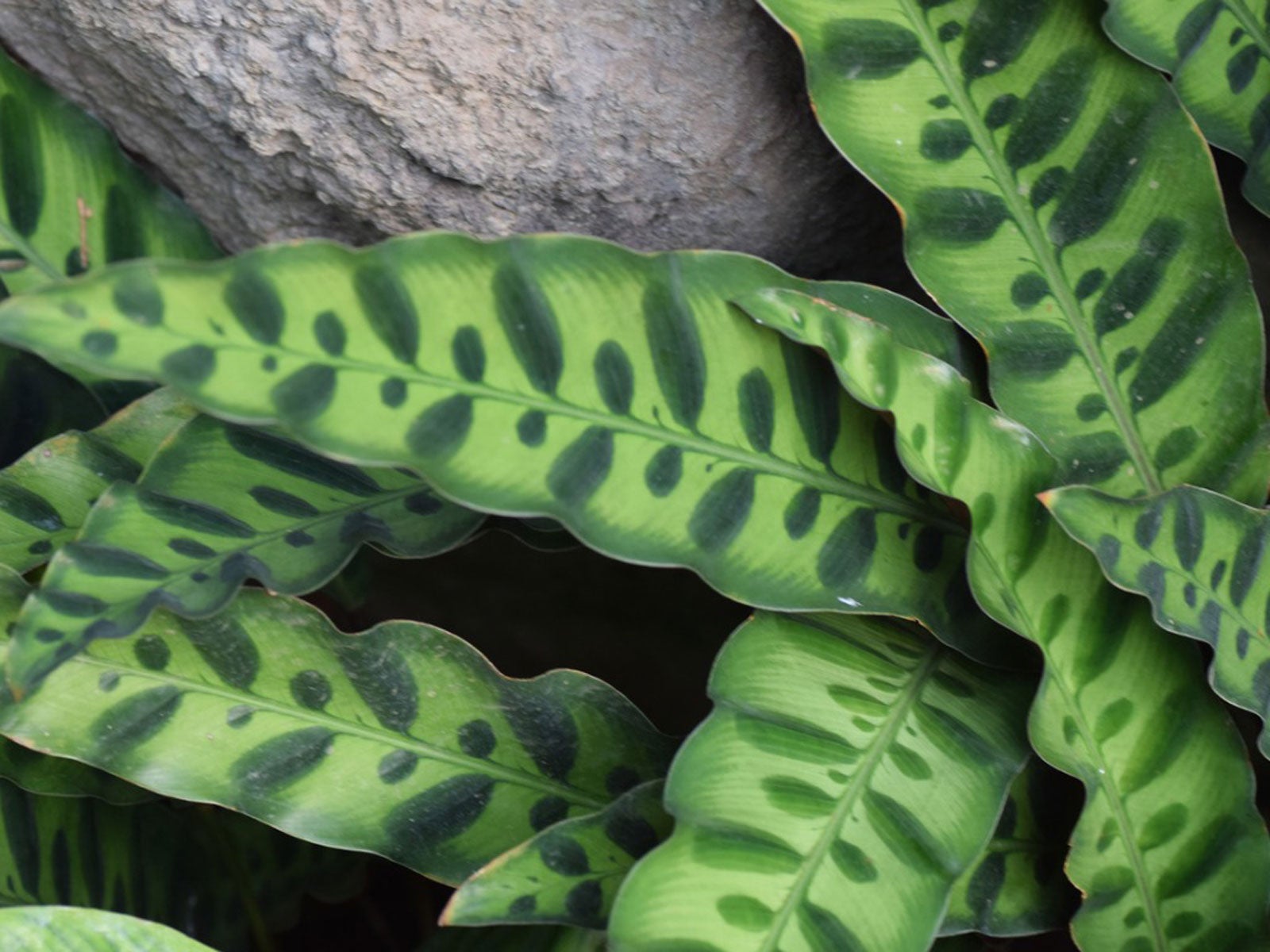
What is a rattlesnake plant? The rattlesnake plant (Calathea lancifolia) is a decorative perennial with strappy, spotted leaves and deep, purple undersides. You can grow this tropical plant outdoors in USDA plant hardiness zones 10 and above. In cooler climates, rattlesnake plants can easily be grown indoors. Read on and learn how to grow rattlesnake houseplants.
Rattlesnake Plant Info
Native to the Brazilian rainforest, the rattlesnake plant thrives in moist, warm, semi-shady climates. If conditions are just right, the plant produces bright, yellow-orange blooms in late spring and early summer. The rattlesnake plant is a real attention-getter, growing to heights of 30 inches (76 cm.) and sometimes more. Like other calathea plants, it is so named for its attractive foliage and interesting patterns.
How to Grow Rattlesnake Houseplants
Grow rattlesnake plant in a container filled with regular, good quality potting mix. Add a generous amount of sand to enhance drainage. Be sure the container has a drainage hole to prevent soggy soil, which contributes to root rot.
Place rattlesnake plant in indirect sunlight. Morning sunlight is fine, but it’s best to avoid intense afternoon sunlight. Growing rattlesnake plants thrive in warm rooms where temps are consistently above 60 F. (15 C.).
Water lightly as needed to keep the potting evenly moist, and never allow the leaves to wilt. Never water to the point of sogginess either.
You can feed the plant monthly during the growing season as part of your rattlesnake plant care regimen using a diluted solution of a balanced, water-soluble fertilizer. Be sure the soil is moist before fertilizing.
Remove spent blooms on growing rattlesnake plants and prune old, damaged leaves to keep the plant neat and healthy.
Watch for spider mites, especially if the soil is dry or humidity is low. The mites are usually easy to control with insecticidal soap spray. Use a commercial product, as homemade soap spray may be too harsh for tropical plants.
Watch for burning and browning along leaf edges. This condition is generally caused by uneven watering, intense sunlight, or excessive fertilizer.
What is a rattlesnake plant? The rattlesnake plant (Calathea lancifolia) is a decorative perennial with strappy, spotted leaves and deep, purple undersides. You can grow this tropical plant outdoors in USDA plant hardiness zones 10 and above. In cooler climates, rattlesnake plants can easily be grown indoors. Read on and learn how to grow rattlesnake houseplants.
Rattlesnake Plant Info
Native to the Brazilian rainforest, the rattlesnake plant thrives in moist, warm, semi-shady climates. If conditions are just right, the plant produces bright, yellow-orange blooms in late spring and early summer. The rattlesnake plant is a real attention-getter, growing to heights of 30 inches (76 cm.) and sometimes more. Like other calathea plants, it is so named for its attractive foliage and interesting patterns.
How to Grow Rattlesnake Houseplants
Grow rattlesnake plant in a container filled with regular, good quality potting mix. Add a generous amount of sand to enhance drainage. Be sure the container has a drainage hole to prevent soggy soil, which contributes to root rot.
Place rattlesnake plant in indirect sunlight. Morning sunlight is fine, but it’s best to avoid intense afternoon sunlight. Growing rattlesnake plants thrive in warm rooms where temps are consistently above 60 F. (15 C.).
Water lightly as needed to keep the potting evenly moist, and never allow the leaves to wilt. Never water to the point of sogginess either.
You can feed the plant monthly during the growing season as part of your rattlesnake plant care regimen using a diluted solution of a balanced, water-soluble fertilizer. Be sure the soil is moist before fertilizing.
Remove spent blooms on growing rattlesnake plants and prune old, damaged leaves to keep the plant neat and healthy.
Watch for spider mites, especially if the soil is dry or humidity is low. The mites are usually easy to control with insecticidal soap spray. Use a commercial product, as homemade soap spray may be too harsh for tropical plants.
Watch for burning and browning along leaf edges. This condition is generally caused by uneven watering, intense sunlight, or excessive fertilizer.
